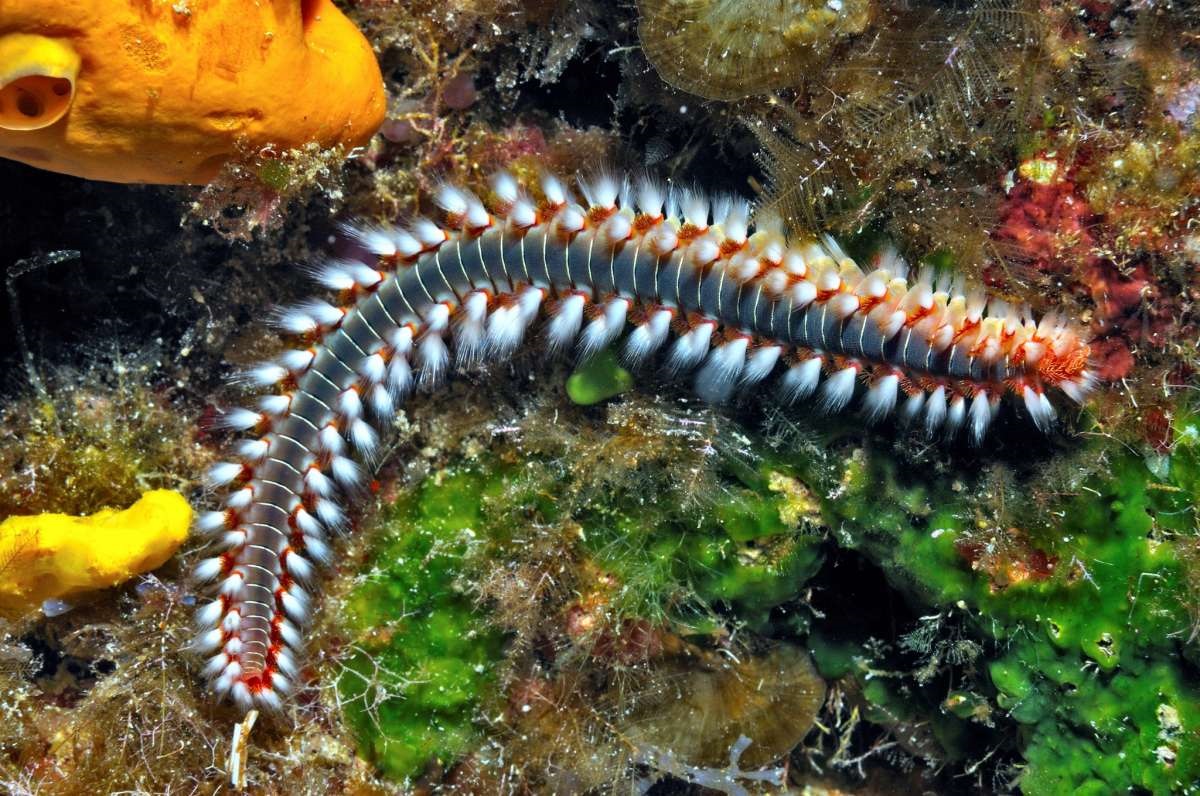Bristle worms can be a controversial topic, as some aquarists believe bristle worms make for a good clean-up crew and are overall beneficial to your tank’s ecosystem. They will eat any leftover food or debris left in the tank.
However, some species of bristle worms are carnivorous and can attack your fish. In which case, it’s best to remove them. You don’t have to pay for an expensive service, you can just set your own DIY bristle worm trap with things you probably already have.
In this step-by-step guide, you can find how to get rid of these worms for good. You can also find more information about bristle worms, and the best way to trap them.
Contents
What Is A Bristle Worm?

A bristle worm is a type of nocturnal segmented worm with bristled hairs, hence its name. These worms are not pretty to look at (let’s face it, they look really creepy), and their presence can be annoying for some fishkeepers.
They can grow up to 24 inches, and usually live under a rock or in the tank’s substrate. They’re unwanted and some species are carnivorous and can be aggressive. You can find out more about bristle worms in our full guide.
If you get stinging Bristle worms, like fireworms, they can injure your fish at night when they’re sleeping. If that’s the case or you’re just generally creeped out by bristle worms, you can remove them.
Below, you can find a step-by-step guide on how to make your own DIY bristle worm trap. You won’t be bothered by nasty worms again!
DIY Bristle Worm Trap
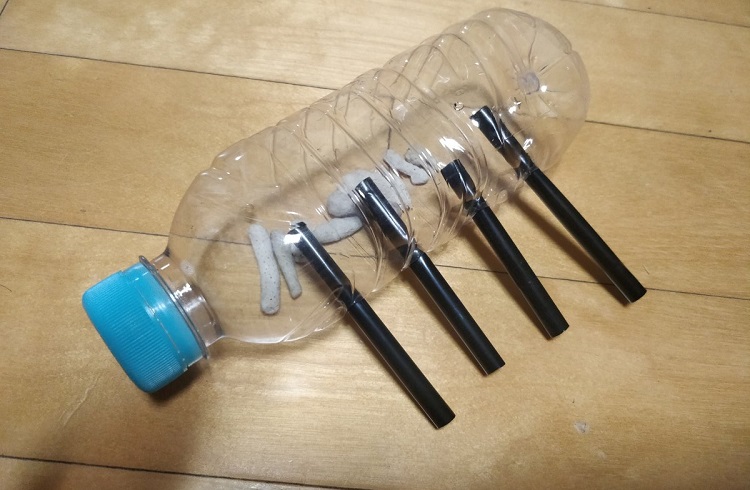
Step-By-Step Guide
Method 1: The Water Bottle Method
You simply need a plastic water bottle, scissors, a cutter, and straws for this super easy method. Here are the six easy steps you can follow to get rid of bristle worms:
Step 1: Prepare the water bottle
The first thing you need to do to make your own cheap DIY bristle worm trap is to prepare the water bottle. Clean a sturdy plastic bottle and remove any packaging. The next steps are practically as easy as this first step.
Step 2: Cut the water bottle
Once your plastic bottle is clean, cut three evenly spaced X’s on one side of it. You can either use a cutter or a razor blade.
There are many DIY bristle worm traps you could make. Here, we suggest two of them so you can pick the best method for you. Let’s dive right in!
Step 3: Cut out holes
Next, cut out three holes with scissors on one side. You need these to be big enough that straws can fit into them.
Then, do the same on the other side. They shouldn’t be an exact match to the first holes, and they don’t need to be located straight across. The important thing is that they are close together.
The second pair of holes need to be a bit offset so they can touch your tank’s substrate. They shouldn’t be straight across from the other first holes.
Step 4: Insert the straws
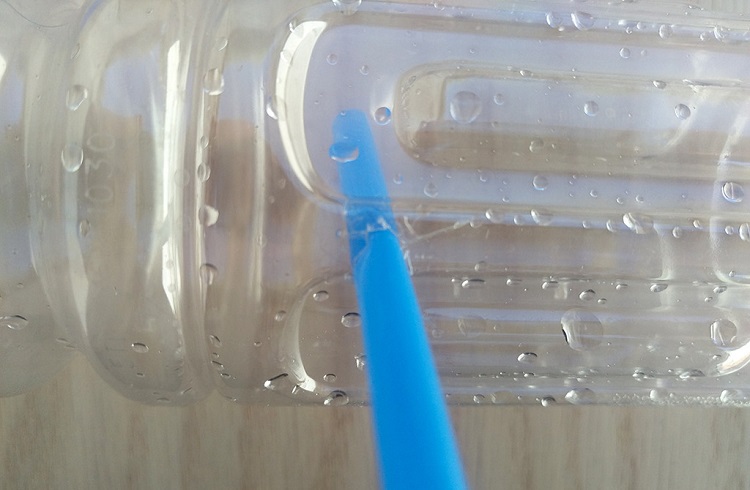
When you’re done with that, insert some cut straws into the holes on each side of the plastic water bottle.
Step 5: Add bait to the trap
Now that you have your simple and inexpensive trap that only takes minutes to make, you can add bait to it. This will attract your bristle worms and lure them into the trap. We recommend anything with meat.
Step 6: Place the trap and wait
Finally, you need to place the trap to catch the bristle worms. Make sure that the straws touch the sand since that’s where bristle worms usually live.
Place a lid on your tank. You should then leave it like that for the night. Next morning, you should have bristle worms in your DIY trap!
Method 2: The Tube Method
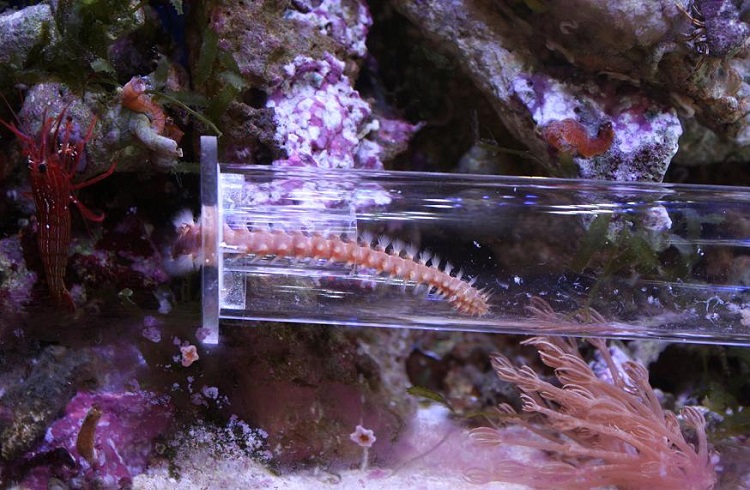
This is a method that’s a bit more complicated than the first one but can get more bristle worms captured at once. It’s still a straightforward method, but you probably won’t find all of the material at home already.
For this method, you will need a piece of ABS or PVC tubing, airline tubing, and a filter bag. As you can see, this is a bit more advanced, but if you like a good DIY project, we recommend you give this a go!
Here are all the simple steps you can follow to set up a bristle worm trap with this method:
Step 1: Secure a bait bag
The first step to make this DIY worm trap is to secure a bait bag between a tube. You can do this by drilling a hole in the tubing.
Step 2: Add Bait
Next, you should add bait to the filter bag to attract your bristle worms. This could be a piece of raw shrimp, for example.
Step 3: Place the trap
You can now set up your DIY trap in your tank once the lights are out. You should be able to catch eight to 10 bristle worms in a single night!
Frequently Asked Questions
Here is a quick FAQ where you can find all the answers to your questions about bristle worms and trapping them.
Are Bristle Worms Bad?
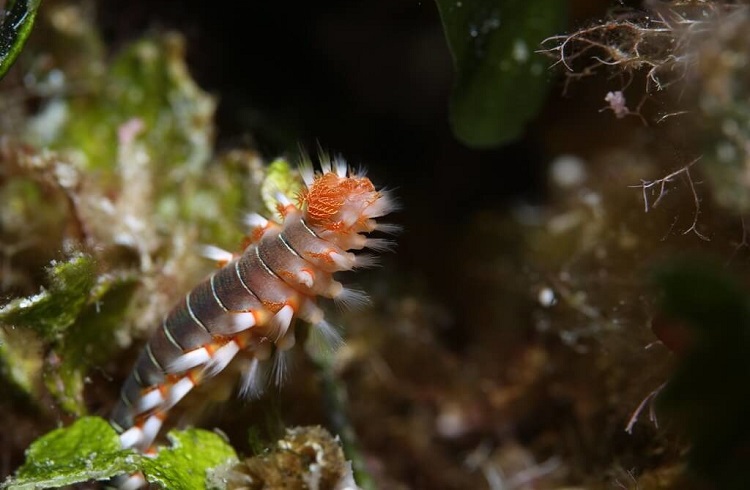
Most bristle worms aren’t bad. In fact, most bristle worms can help keep your tank clean. Sure, they’re not the prettiest to look at. But they’re great cleaners and remove your tank’s ammonia, preventing any filter blockage.
However, some bristle worms are bad if they are carnivorous. Stinging worms are particularly bad.
They have bristles with toxic tips which sting a lot, hence their name. They also have strong jaws and reproduce very quickly. You really want to avoid this. It’s easier to deal with one or two bristle worms than an entire family.
Fireworms are very rare in captivity, but they can happen. They can go after your fish when they’re asleep, during nighttime. In which case, you should remove them immediately.
Is There A Fish That Eats Bristle Worms?
Yes, there is a fish that eats bristle worms. In fact, there’s more than one, and some invertebrates can eat these worms as well.
This can be a good alternative if you don’t want to set a DIY trap and want to add some more life into your tank.
Fish that eat bristle worms include Hawkfish, Dottyback, Goatfish, Gobies, Copperband Butterflyfish, Pufferfish, and Wrasses. As for what invertebrates eat bristle worms, you have Arrow crabs, Coral Banded Shrimps, and Horseshoe crabs.
Check which ones are compatible with your current fish. It’s always fun to introduce new tank mates to your aquarium, and they can remove bristle worms without you having to set a trap!
What Do You Need To Make A Bristle Worm Trap?
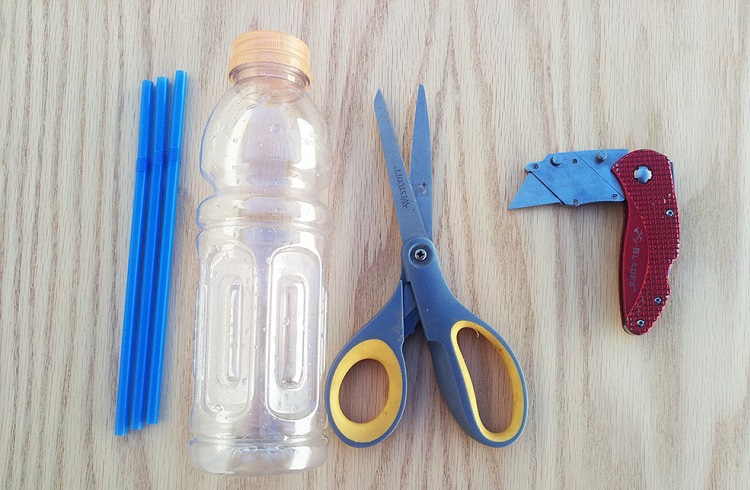
If you just want your bristle worms removed and don’t want to add any new fish or invertebrates to your tank, you can make your own bristle worm trap. You just need to check our comprehensive step-by-step guide above.
As for what you need to make a bristle worm trap, you need very few things. These are cheap, and you probably already have them.
To set up the trap, you need a rigid small plastic water bottle, a cutter or a razor blade, straws, and scissors. And that’s all you need to set up your own DIY bristle worm trap!
There are other methods that require other traps, but we think this is the simplest method and that has the most accessible materials.
What Is The Best Bait For A Bristle Worm Trap?
You need to set up bait to lure the worm in for your bristle worm DIY trap to work. Anything with protein usually does the trick.
We recommend you place a piece of meat in your trap, like raw shrimp meat or even frozen fish food.
Frozen food won’t attract bristle worms as much as raw, cooked, or fresh food. It’s also best to select smaller pieces of food, as bristle worms are small.
We do have some recommendations for the best bait for a bristle worm trap. You could try cooked shrimp meat, raw shrimp meat, raw scallop meat, raw clam meat, mussel meat, fish, and fish roe.
The worm will be attracted by the food and end up in the trap. It’s really not that hard, and you can easily remove bristle worms from your aquarium if they’re a nuisance to you or your fish.
Final Thoughts
Bristle worms, especially fireworms, can hurt your fish and mess up your tank’s ecosystem.
You need patience to remove them, but there are a few DIY traps you can make yourself.
In this post, we gave you two easy and cheap methods so you can get rid of them for good!

Ian Sterling, founder of Fishlab.com, began his aquarium journey over 30 years ago, driven by a deep fascination for fish and their diverse personalities. His website, Fishlab.com, is dedicated to making fishkeeping accessible and enjoyable, offering beginner-friendly guidance, expert insights, and a community for aquarists to connect and share experiences.


